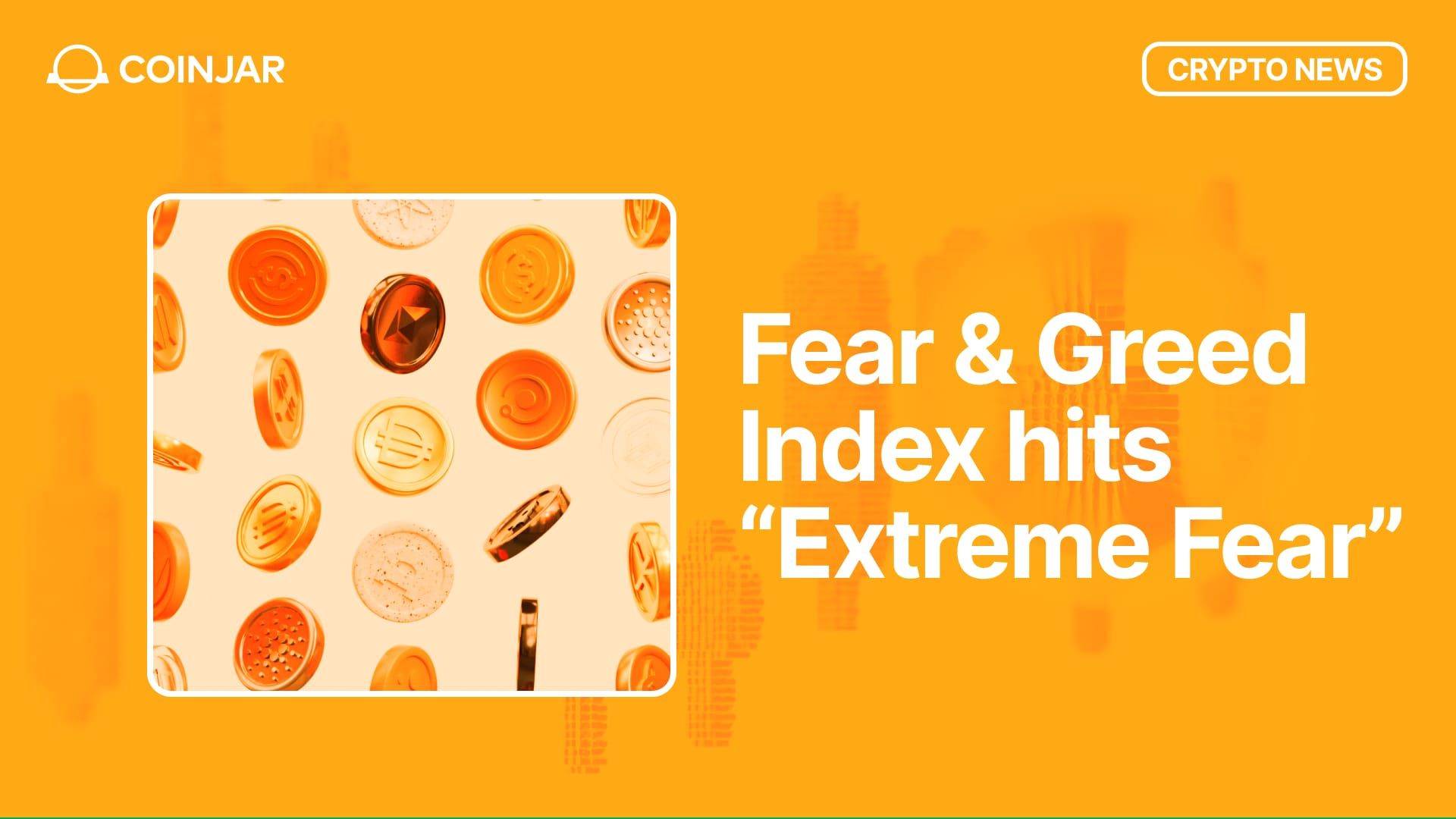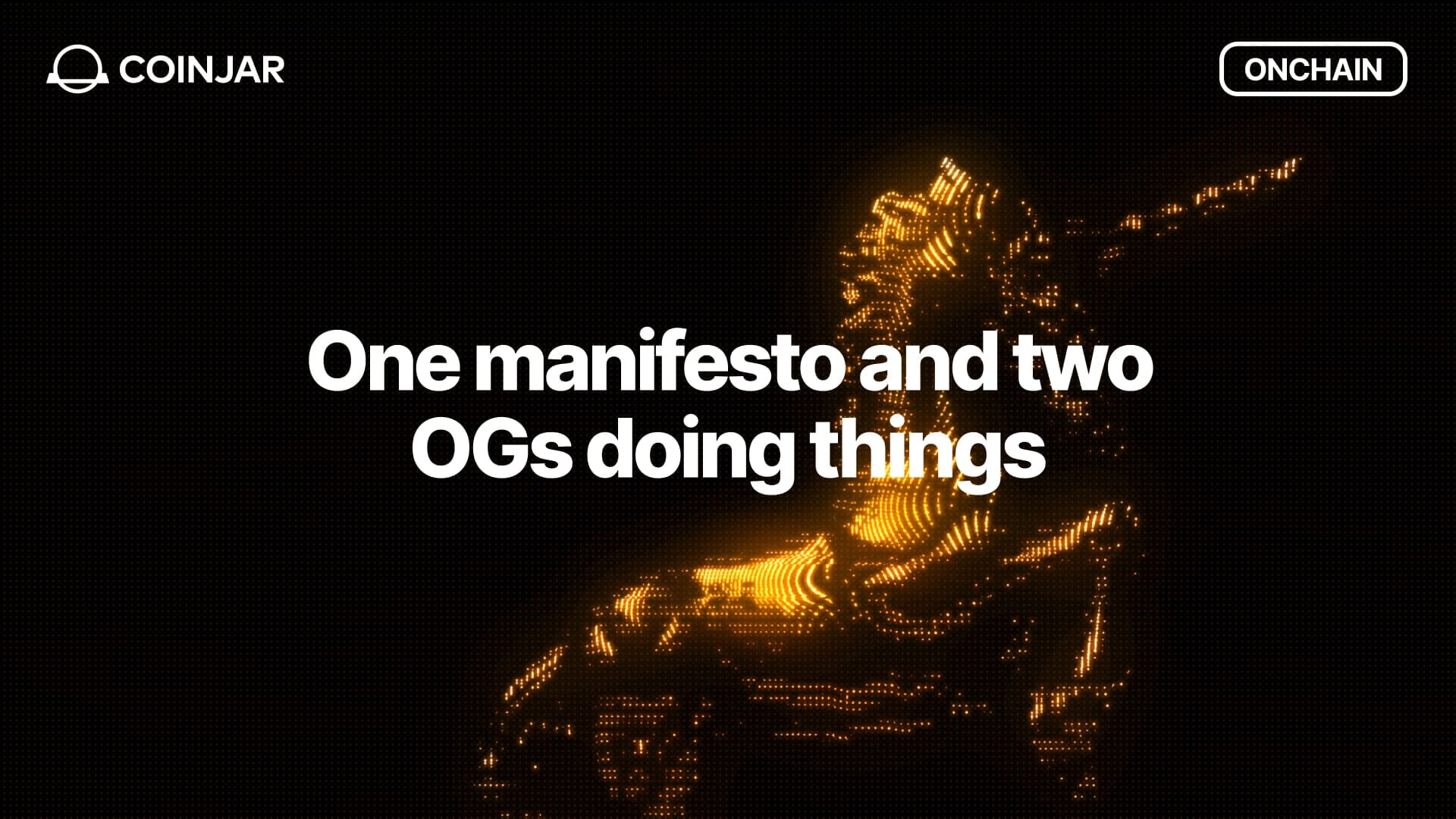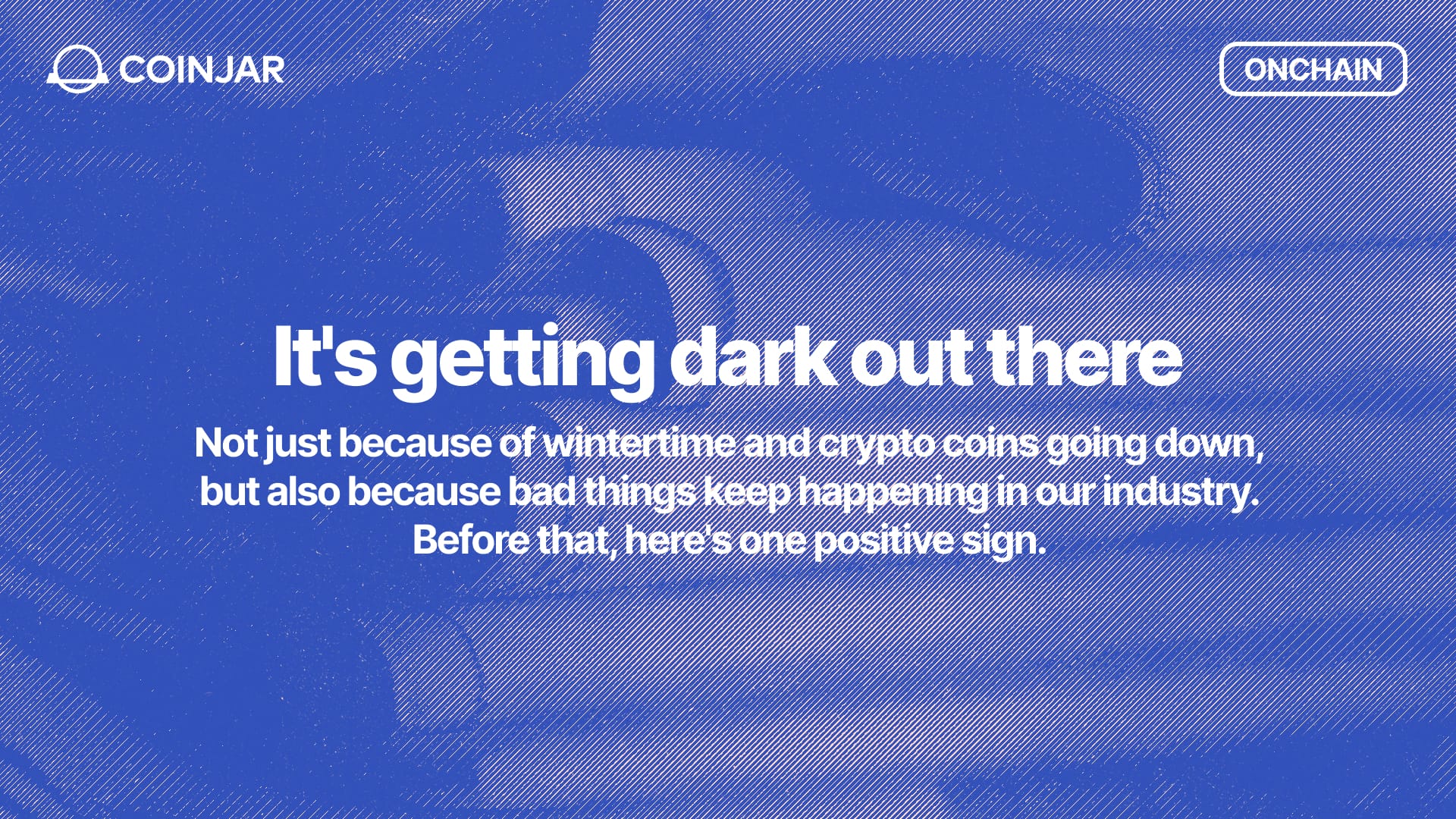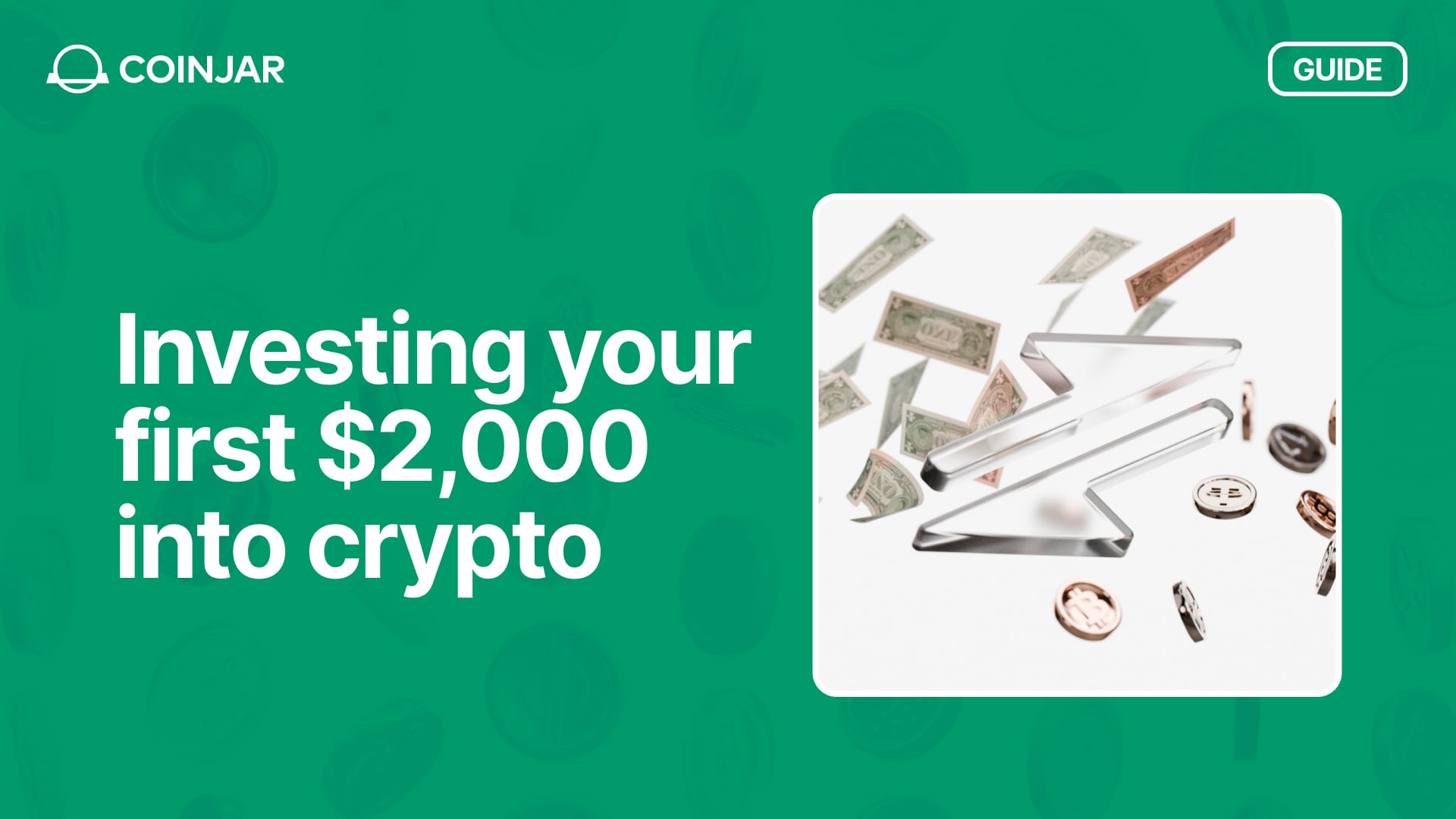Fear & Greed Index Hits Extreme Fear: Why?
October 17, 2025The Crypto Fear and Greed Index has hit “extreme fear”. What are the underlying causes of this and will the needle stay there?
Share this:

In the high drama of the crypto world, market sentiment can shift dramatically overnight. Today, true to drama queen style, the Crypto Fear and Greed Index has thrown itself off the “greed” ledge into the lows of "Extreme Fear" territory. As of October 17, 2025, the index sits at a chilling “22” on the dial. It’s this type of crypto soap opera that keeps the crypto kids coming back for more.
This particular faceplant has come about due to a few different sub-plots.
Why Has the Index Hit Extreme Fear?
Bitcoin (as of the 17th October 2025) is currently trading around US$108,718, down approximately 14% from its all-time high of $126,210 reached on October 6, 2025.
The crypto Fear and Greed Index experienced a dramatic plunge from Greed to Fear within 24 hours following President Donald Trump's announcement of 100% tariffs on Chinese imports in early October, triggering over US$19 billion in liquidations.
Bitcoin briefly dropped below US$102,000 during the October 11 selloff, before rebounding above US$115,000.
Ethereum has fallen to approximately US$3,900, from around US$4700 just weeks before, while major altcoins including Solana and Cardano have also experienced similar volatility.
These price jumps directly impact the index's fear component, as erratic swings shake investor confidence. The tariff shock and subsequent recovery have created whiplash conditions that push sentiment to extremes in both directions.
What Does This Mean for Crypto Investors?
Extreme Fear isn't necessarily catastrophic. Historically, moments of extreme fear have sometimes preceded strong market rebounds, as panicked selling creates opportunities for value investors. More or less, there’s people waiting for these specific moments to start buying at a “discount”.
But, that is assuming that prices will go back up. And we all know in crypto, there is no guarantee that will happen. Prices could fall further, so you still have to make good choices, unlike your decision to buy Fartcoin on the downward slide.
Just keep in mind that “Extreme Fear” isn't all doom and gloom.
Climbing the "Wall of Worry": A Good Sign?
Interestingly, the current market conditions may actually represent what traders call "climbing the wall of worry". It is a phenomenon where markets can rise despite everyone feeling spooked.
Bitcoin is currently trading within 20% of its all-time high while the Fear and Greed Index sits at extreme fear levels. When sentiment and price are far apart, this is often considered a bullish signal in traditional markets. The fact that Bitcoin has held above US$108,000 despite extreme fear readings could indicate underlying strength rather than impending collapse.
Whether this applies to the crypto markets and to this particular situation is yet to be seen.
Is the Indicator Still Reliable?
There's a growing debate about whether the Fear and Greed Index remains as predictive as it once was. The cryptocurrency market has matured significantly since the indicator's creation, with institutional investors, ETFs, and sophisticated trading strategies now dominating trading volumes.
These professional participants may not react to market conditions in the same emotionally-driven ways that individual investors do. The index may just be reflecting noise rather than solid signals in today's more mature market structure.
The Endurance of Extreme Fear
It's also worth noting that extreme fear readings can persist far longer than many investors expect. During previous bear markets, the Fear and Greed Index has remained in extreme fear territory for weeks or even months at a time.
The extreme fear might signal a buying opportunity, but timing the exact bottom is what investing dreams are made of, but not every investor gets this right!
What is the Fear and Greed Index?
For those new to the crypto space, the Crypto Fear and Greed Index is a popular tool developed by Alternative.me that measures the emotional pulse of the Bitcoin and broader cryptocurrency market. It aggregates data from various sources, including market volatility, trading volume, social media sentiment, Bitcoin dominance, and Google Trends for crypto-related searches. The index ranges from 0 to 100:
- 0-24: Extreme Fear (investors are terrified, often leading to oversold conditions)
- 25-49: Fear (caution dominates, prices may be undervalued)
- 50: Neutral (balanced sentiment)
- 51-74: Greed (optimism grows, potential overvaluation)
- 75-100: Extreme Greed (euphoria, risk of a bubble)
When the index hits Extreme Fear, some investors may see it as a buying opportunity for long-term holders. Others will be crying into their Bitcoin Maxi mugs and maybe even swapping it for a shot glass.
But, of course, this is one quality soap opera where we all do it for the plot.
CoinJar’s digital currency exchange services are operated by CoinJar Australia Pty Ltd ACN 648 570 807, a registered digital currency exchange provider with AUSTRAC.
CoinJar Card is a prepaid Mastercard issued by EML Payment Solutions Limited ABN 30 131 436 532 AFSL 404131 pursuant to license by Mastercard. CoinJar Australia Pty Ltd is an authorised representative of EML Payment Solutions Limited (AR No 1290193). We recommend you consider the Product Disclosure Statement and Target Market Determination before making any decision to acquire the product. Mastercard and the circles design are registered trademarks of Mastercard International Incorporated.
Google Pay is a trademark of Google LLC. Apple Pay is a trademark of Apple Inc.
This site is protected by reCAPTCHA and the Google Privacy Policy and Terms of Service apply.
Share this:
On/Offchain
Your weekly dose of crypto news & opinion.
Join more than 150,000 subscribers to CoinJar's crypto newsletter.
More from CoinJar Blog

Onchain: One manifesto and two OGs doing things
November 19, 2025Story One Wake up babe, new manifesto dropped Why ship app, when you can write manifestos instead, amirite? Or so the Ethereum Foundation & Co. must have thought as they sat...Read more
Onchain: It's getting dark out there
November 5, 2025Not just because of wintertime and crypto coins going down, but also because bad things keep happening in our industry. Before that, here's one positive sign. Story One x402...Read more
$2,000 to Invest? Check Out This Sample Crypto Portfolio
October 23, 2025So you've done your dry run buying 20 bucks worth of Bitcoin. Now that you trust the process, what are some ideas for your next move?Read moreCoinJar’s digital currency exchange services are operated by CoinJar Australia Pty Ltd ACN 648 570 807, a registered digital currency exchange provider with AUSTRAC.
CoinJar Card is a prepaid Mastercard issued by EML Payment Solutions Limited ABN 30 131 436 532 AFSL 404131 pursuant to license by Mastercard. CoinJar Australia Pty Ltd is an authorised representative of EML Payment Solutions Limited (AR No 1290193). We recommend you consider the Product Disclosure Statement and Target Market Determination before making any decision to acquire the product. Mastercard and the circles design are registered trademarks of Mastercard International Incorporated.
Google Pay is a trademark of Google LLC. Apple Pay is a trademark of Apple Inc.
This site is protected by reCAPTCHA and the Google Privacy Policy and Terms of Service apply.